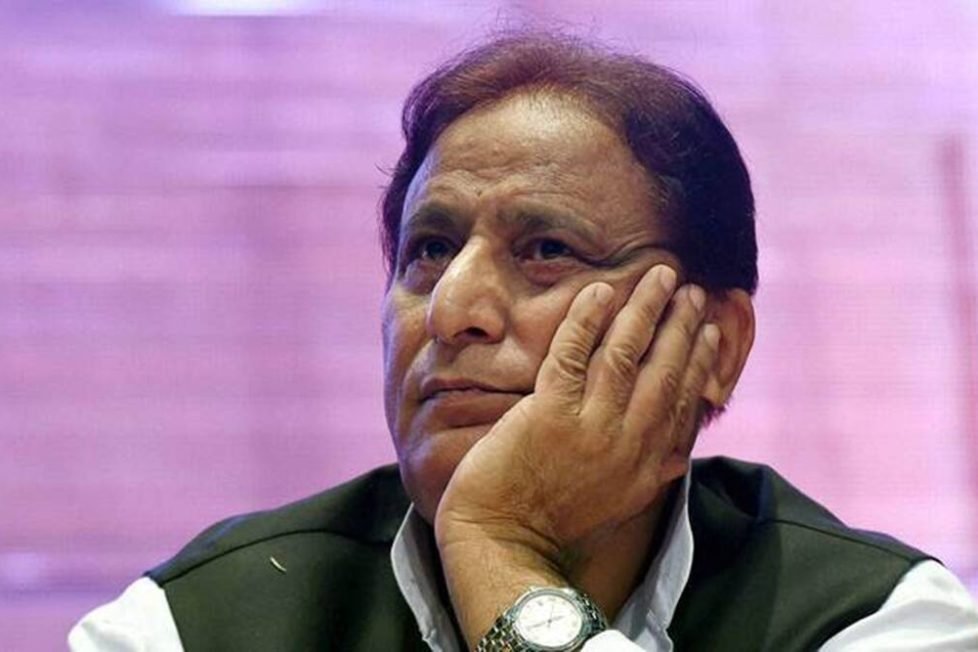SP leader Azam Khan sentenced to three years in jail in 2019 hate speech case


Samajwadi Party leader Azam Khan has been found guilty on Thursday in the 2019 hate speech case by the Rampur special MP/MLA court. He was given a three-year prison term and a Rs 25,000 fine by the court. During the 2019 Loksabha Elections, Azam Khan is alleged to have insulted both Yogi Adityanath, the chief minister of Uttar Pradesh and Prime Minister Narendra Modi. Additionally, he had insulted IAS Aunjaneya Kumar Singh, the former Rampur District Magistrate.
According to the reports, the court determined that Khan had abused the then-DM, IAS Aunjaneya Kumar Singh, as well as the PM and CM, Yogi Adityanath. On April 9, 2019, Azam Khan was charged with uttering obscene statements about the three at Milak Kotwali in Rampur. Khan has the choice to appeal the Rampur Court’s decision to the High Court.
Azam Khan, a leader of the SP, criticized the BJP-led government for supposedly destroying the lives of the populace in his address in 2019. He had urged the populace to exact “inteqam” (revenge) on Prime Minister Modi and CM Yogi Adityanath of the U.P. In addition, he claimed that the BJP’s control from 2014 to 2019 had resulted in significant suffering for Muslims and that the BJP leaders in charge of the government were “criminals.” He had repeatedly asked for the opportunity to exact revenge on Yogi Adityanath, the chief executive of Uttar Pradesh, and Prime Minister Modi.
The case had been filed in accordance with Sections 125 of the Representation of People Act of 1951, Sections 153a (promote hatred between two groups), and Section 505-1 (statement conducing to public harm) of the IPC. However, the complaint was filed after Akash Saxena, a local BJP leader and advocate, brought up the matter and claimed that Khan was attempting to foment violence between two tribes by making a provocative speech. Saxena, who ran against Khan in the most recent MLA elections in 2022, claimed that Khan delivered a provocative speech intended to instigate violence and used derogatory language toward the then-DM and his mother.
“On my complaint, the returning officer took cognizance of the matter and after checking the video footage of the speech, he ordered FIR against the leader”, he was quoted further.
The leader may lose power even though the Court is ready to pronounce Khan’s sentence amount because every MLA, MLC, or MP loses their membership in the house if found guilty in a criminal case.
According to the Supreme Court’s ruling from July 10, 2013, any MLA, MLC, or MP who is convicted in a criminal case and given a term of at least two years in prison will immediately forfeit their membership in the house. Khan may lose his influence because the maximum punishment under IPC sections 505-1 and 153a are three years in prison.
The records show that the Court considered the testimony of 21 witnesses, five of whom were provided by the defense counsel. However, the prosecution produced four cameramen, the team leader of the video observation team, and more witnesses.
Earlier, this year, the Samajwadi Party shared criminal records of Azam Khan, his wife Tanzeen Fatma, and their son Abdullah Azam Khan.
The Indian Penal Code sections 153(A) (Promoting hatred between various groups on religious grounds), 159 (Word, gesture, or activities intended to offend a woman’s modesty), 509 (cheating and dishonestly inducing delivery of property), 448 (house tress pass), and 500 are the ones most often associated with the cases against Azam Khan (defamation). Election fraud is another charge leveled against Azam Khan. He has received many Section 171 G charges against him (False statement in connection with an election).
It is noteworthy that Azam Khan and his family are also accused of stealing several things, including power, goats, and antiquated texts from an Islamic institution.
Not only this, In September 2019, Rampur Police in Uttar Pradesh booked Azam Khan on allegations of ‘stealing goats’ following the complaint which was filed in October 2016.
DISCLAIMER: The author is solely responsible for the views expressed in this article. The author carries the responsibility for citing and/or licensing of images utilized within the text.
